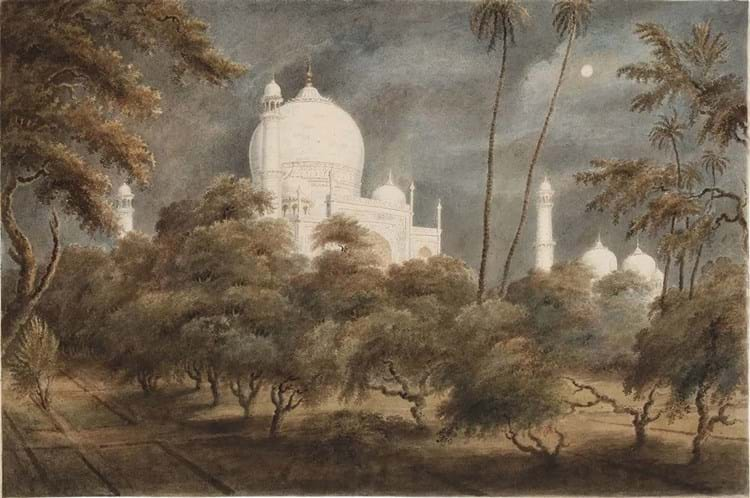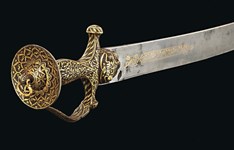
Watercolour of the Taj Mahal bathed in moonlight by the Bengali artist Sita Ram, estimate £30,000-50,000 at Sotheby’s.
A collector from his teens, his career as a much-admired lecturer at Harvard (1960-95) was complemented by roles as curator of Islamic and Indian Art at Harvard Art Museums and special consultant to the Metropolitan Museum of Art in New York.
Welch donated much of his collection to Harvard and the Met and the lion’s share of the remainder was auctioned by Sotheby’s across two memorable sales in 2011. However, on October 25, Sotheby’s will offer a further 130 lots under the heading of the Edith and Stuart Cary Welch Collection.
Welch was among the first American art historians to study and collect a wide range of Indian paintings. In particular, he championed the once neglected genre of Company School painting, the diverse group of works produced by Indian artists working for British patrons in the days of the Raj.
Among the highlights of Sotheby’s sale, estimated at £30,000-50,000, is a 16in x 2ft (40 x 60cm) watercolour of the Taj Mahal bathed in moonlight painted by the Bengali artist Sita Ram.
It is from a set of 10 albums of 229 paintings prepared for Francis Rawdon-Hastings (1754-1826), 1st Marquess of Hastings, who was Governor- General of India from 1813-23.
During his second year in office, Hastings had employed Sita Ram to accompany him and his family during a 15-month tour from Barrackpore to the foothills of the Himalayas north of Delhi, and back again via Agra to Calcutta.
Hastings’ journal entry for February 27, 1815, reads: “At night we went to view the Taj by moonlight. It was well worth the trouble. The night was cloudless, and the moon shed a brilliancy on the pure white of the building. The silence, the chastened light, the solemnity of the scene, all contributed to enhance the real beauty of the appearance.”
The albums stayed together at Mount Stuart House with the Bute family until 1974, when two were consigned to auction.
The other eight remained at Mount Stuart House until 1995, when they were acquired by the British Library.













